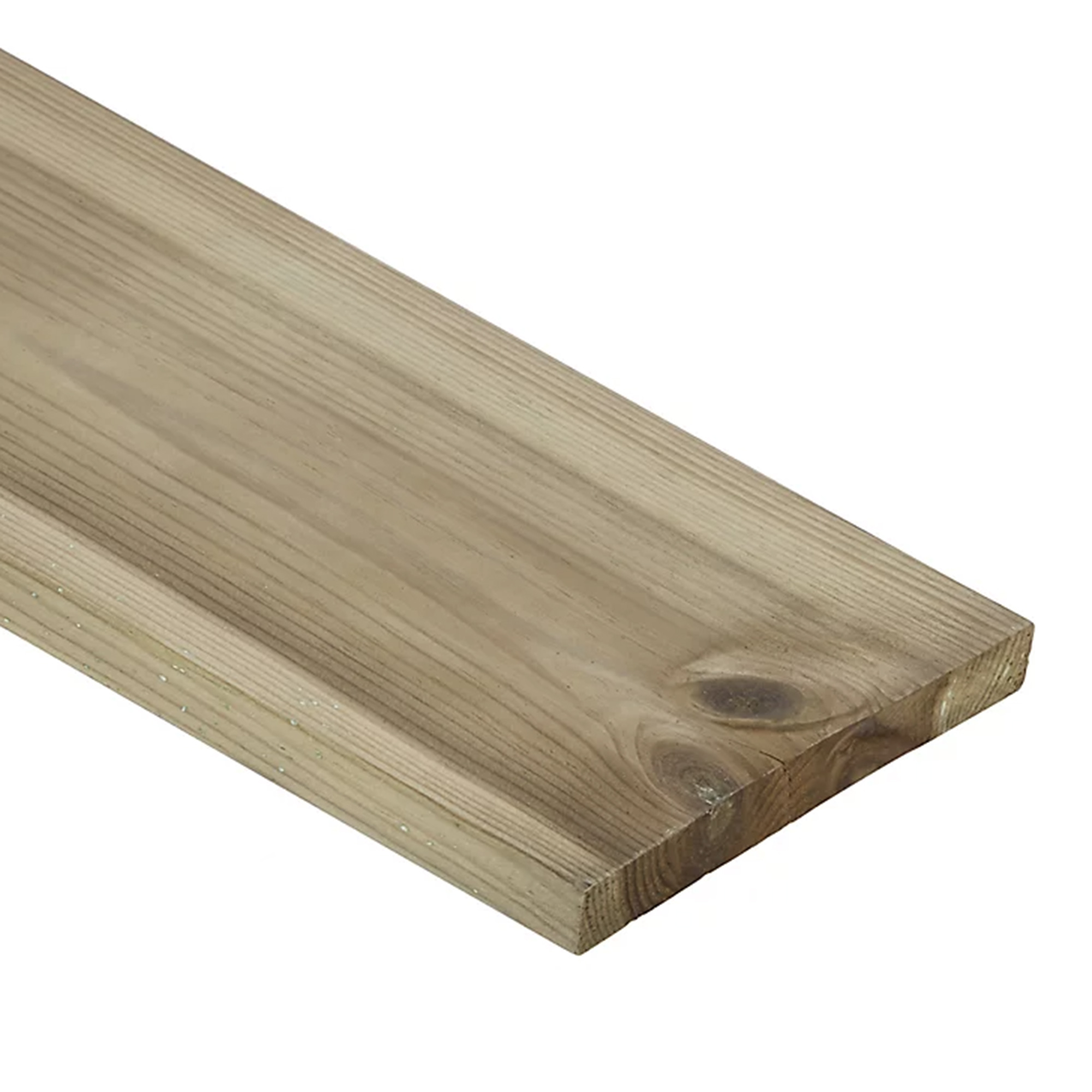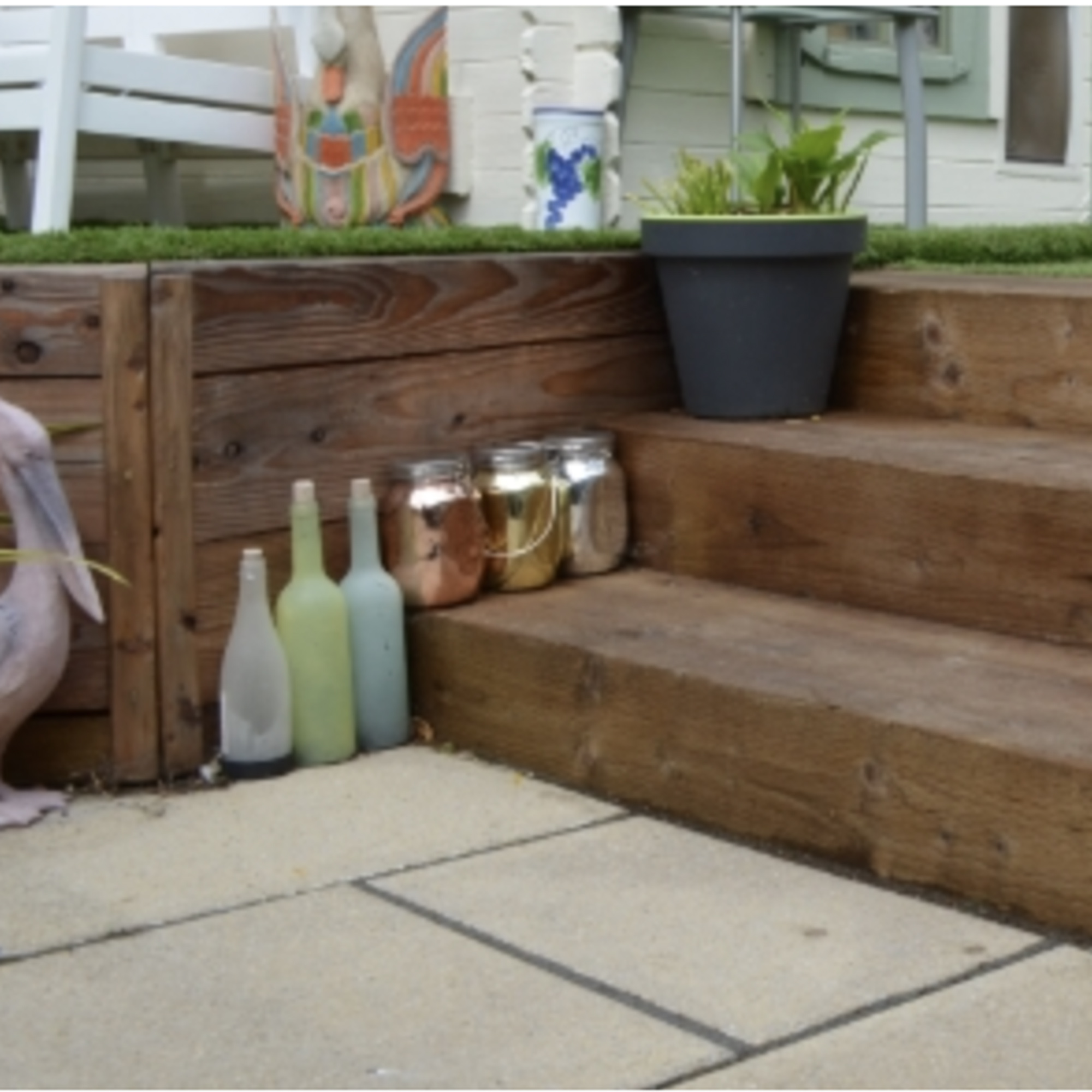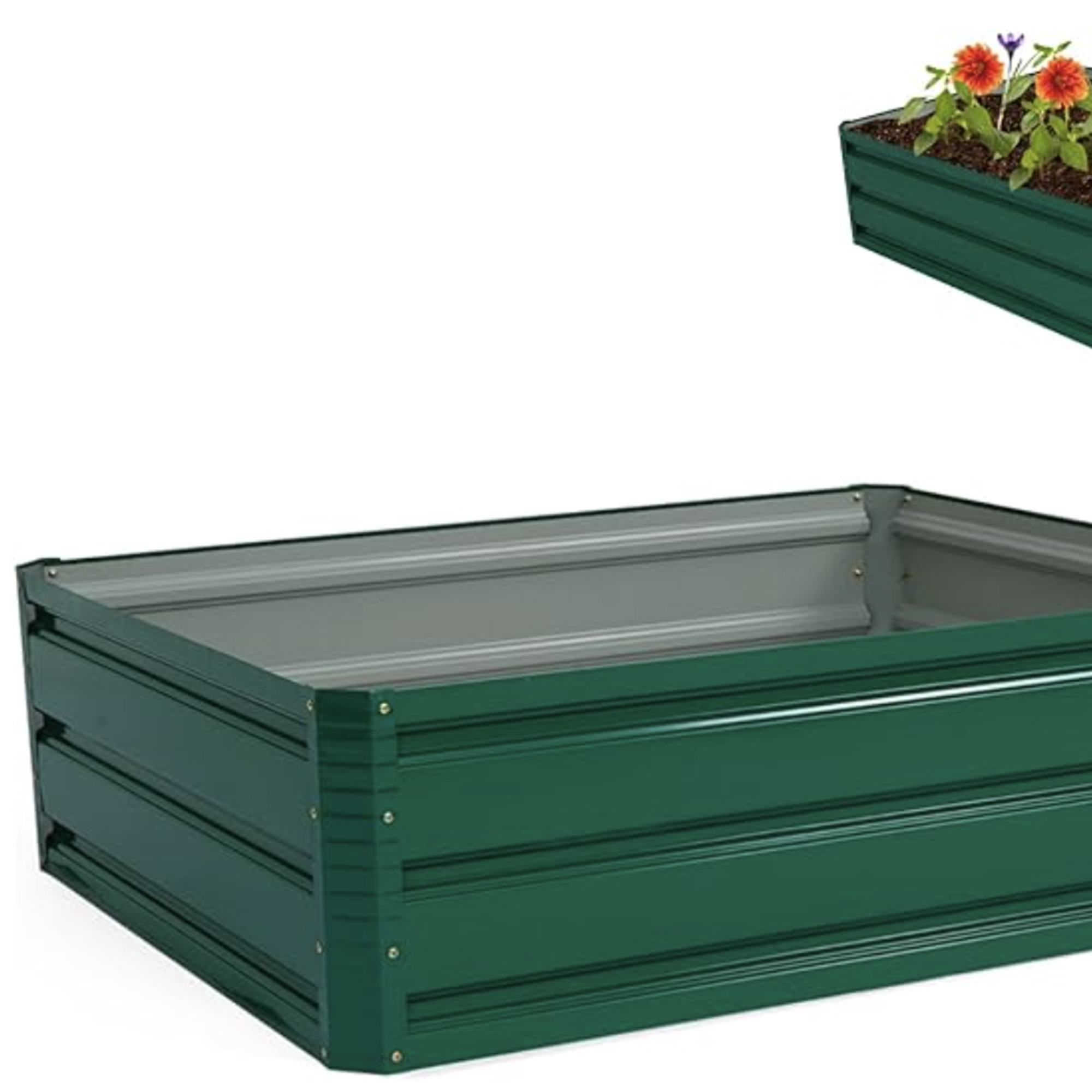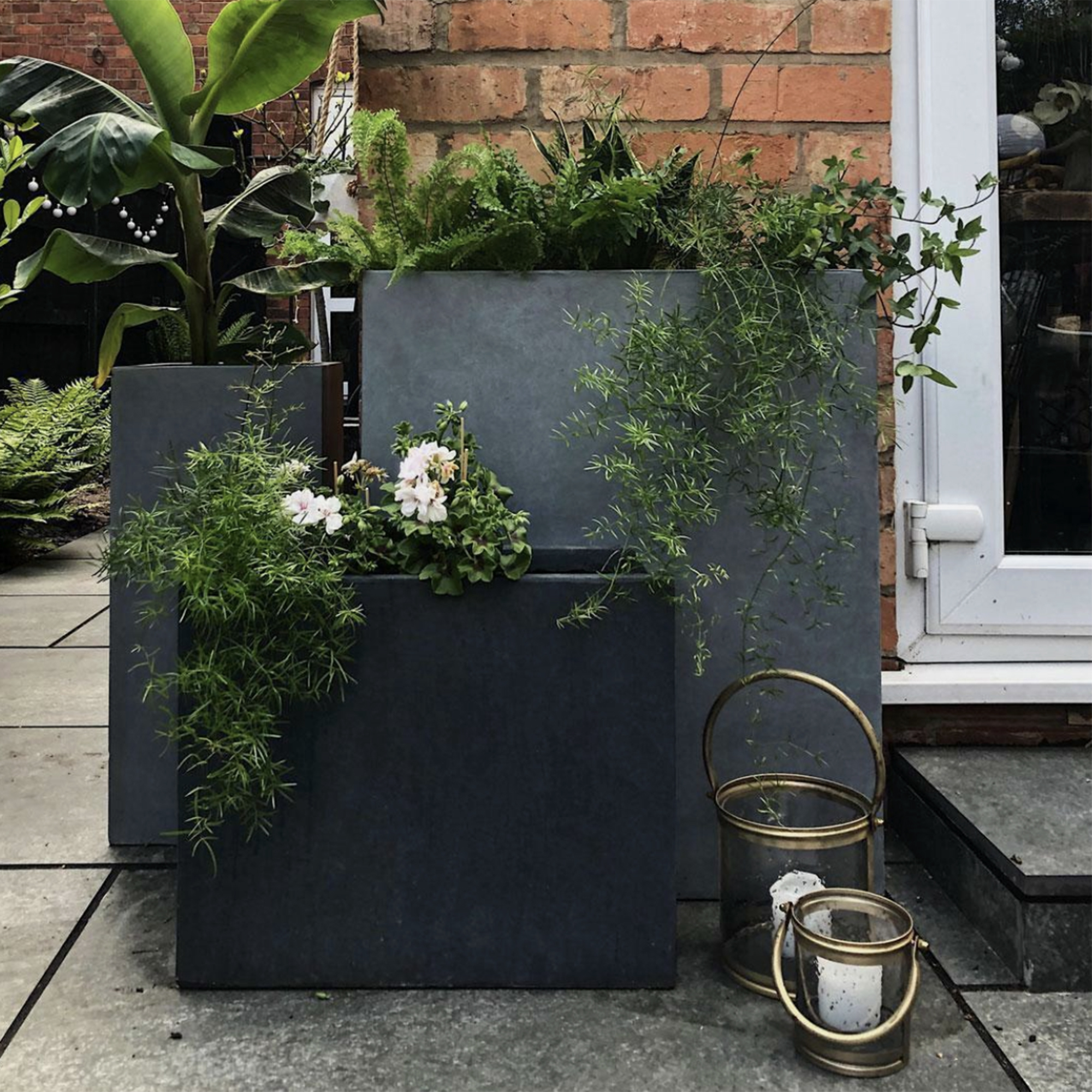11 reasons why raised beds could be a clever design move for your garden
Looking for fresh raised garden bed ideas? These options will be enough to get you started
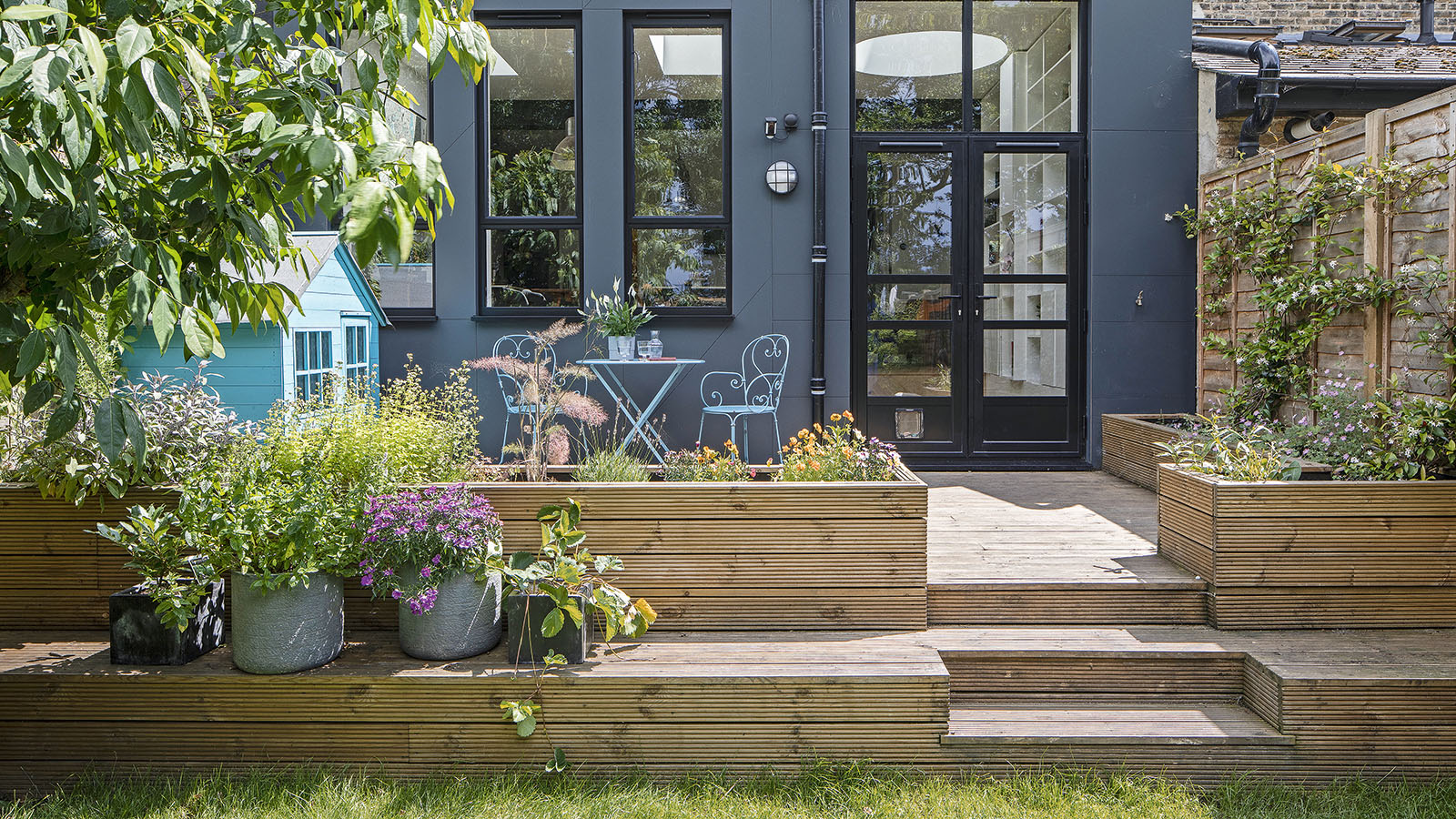
Raised garden bed ideas are the one planting trend that isn't going anywhere. Their visual appeal and ease of construction make them top of people's most-wanted lists when it comes to doing a garden revamp.
Designs go beyond linear timber structures too. Raised beds can be key to your garden design, offering a chance to zone your outdoor living spaces, add interest at different heights, bring in extra seating, as well as provide weed-free containers for growing your favourite plants.
Options range from budget-friendly DIY jobs to bespoke designs that form the basis of many top-end landscape designer's projects.
11 raised garden bed ideas
The raised garden bed ideas to go for totally depend on your space and garden style.
"For a more contemporary garden, powder-coated metal raised beds add a modern and more formal twist. Whereas, if your garden is more ‘cottagecore’ it may be best to build raised beds out of wood, brick or corrugated metal to suit your outside space," says Stephanie Harrod of Harrod Horticultural.
These 11 ideas will hopefully serve as inspirational reminders of what raised beds can do for your garden landscaping.
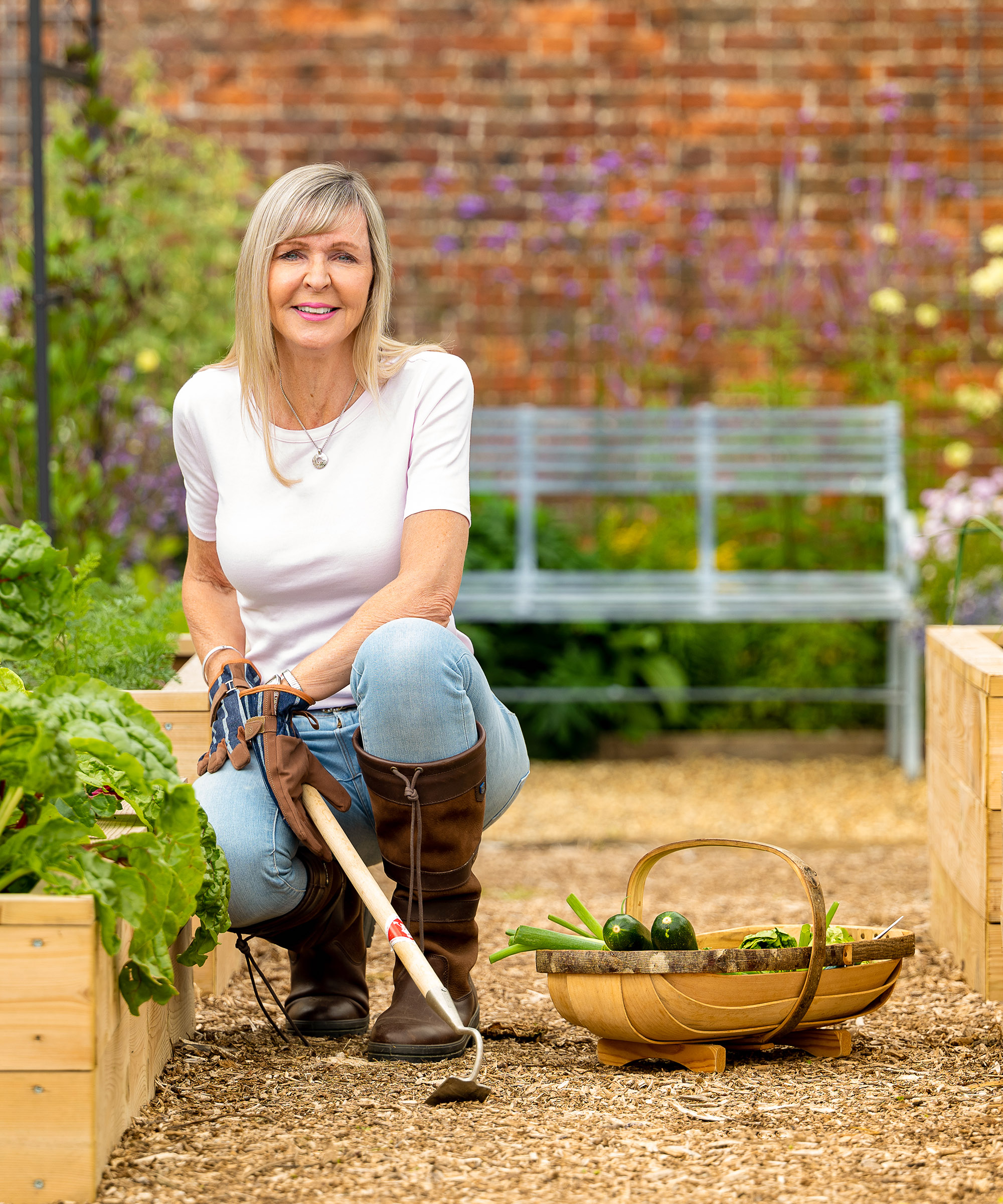
Stephanie is a keen gardener with a vision to transform outdoor spaces into havens of beauty and functionality. Combining her love for nature with innovative design. Harrod stock a large range of raised beds to suit all garden needs.
1. Reuse materials like gravel or scaffold boards
For sustainable and cheap raised garden bed ideas the trick is to reclaim existing materials. Fiona Jenkins, garden expert at MyJobQuote recommends used gravel- or scaffold-boards as one of the cheapest materials for creating raised beds.
"Gravel boards, which are used to put up a fence, are robust and sturdy but still easy to cut to size and screw or nail into place. There is no shortage of new and reclaimed scaffold board suppliers and many will also deliver to your home," says Fiona.
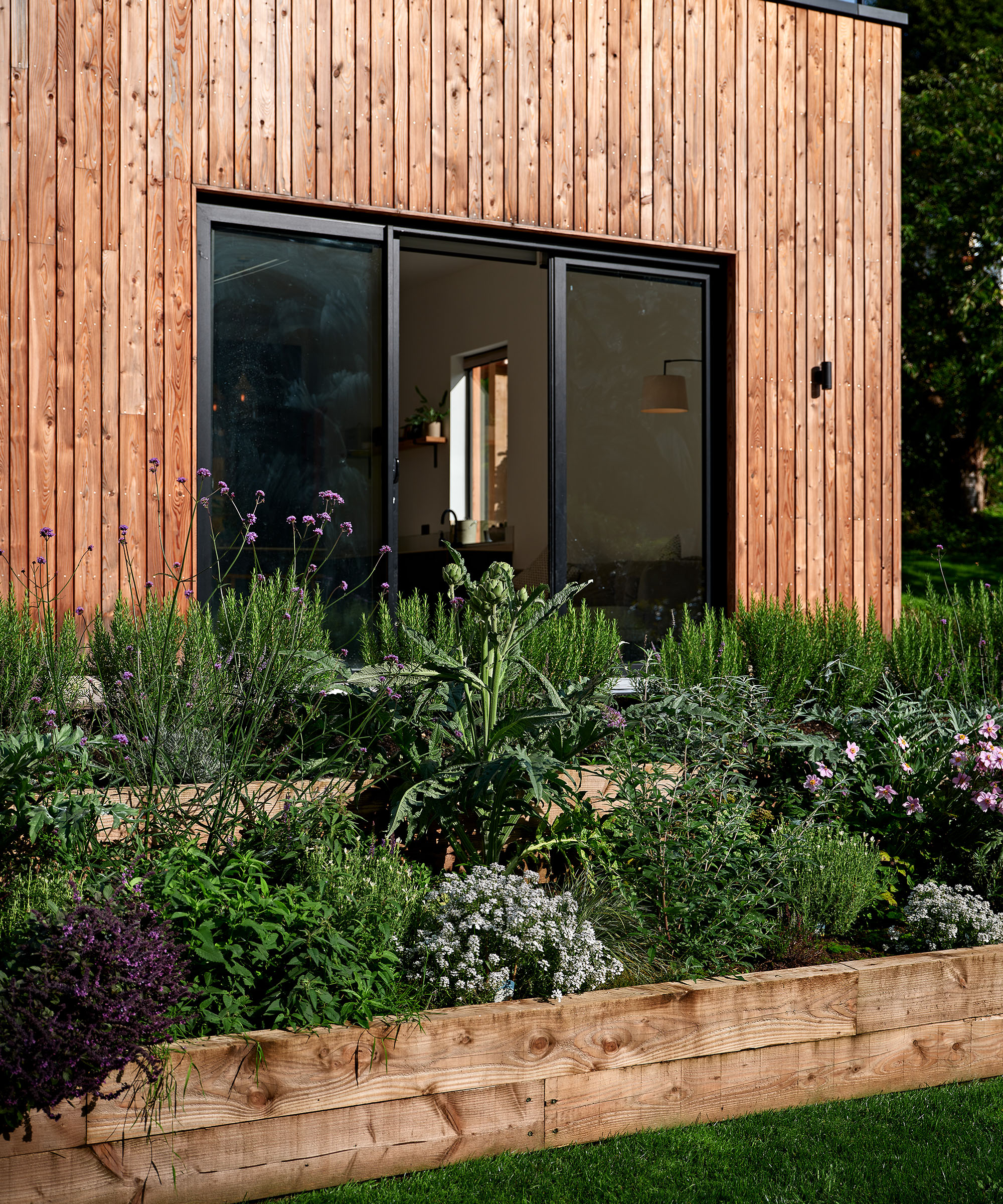
Shop materials for raised beds
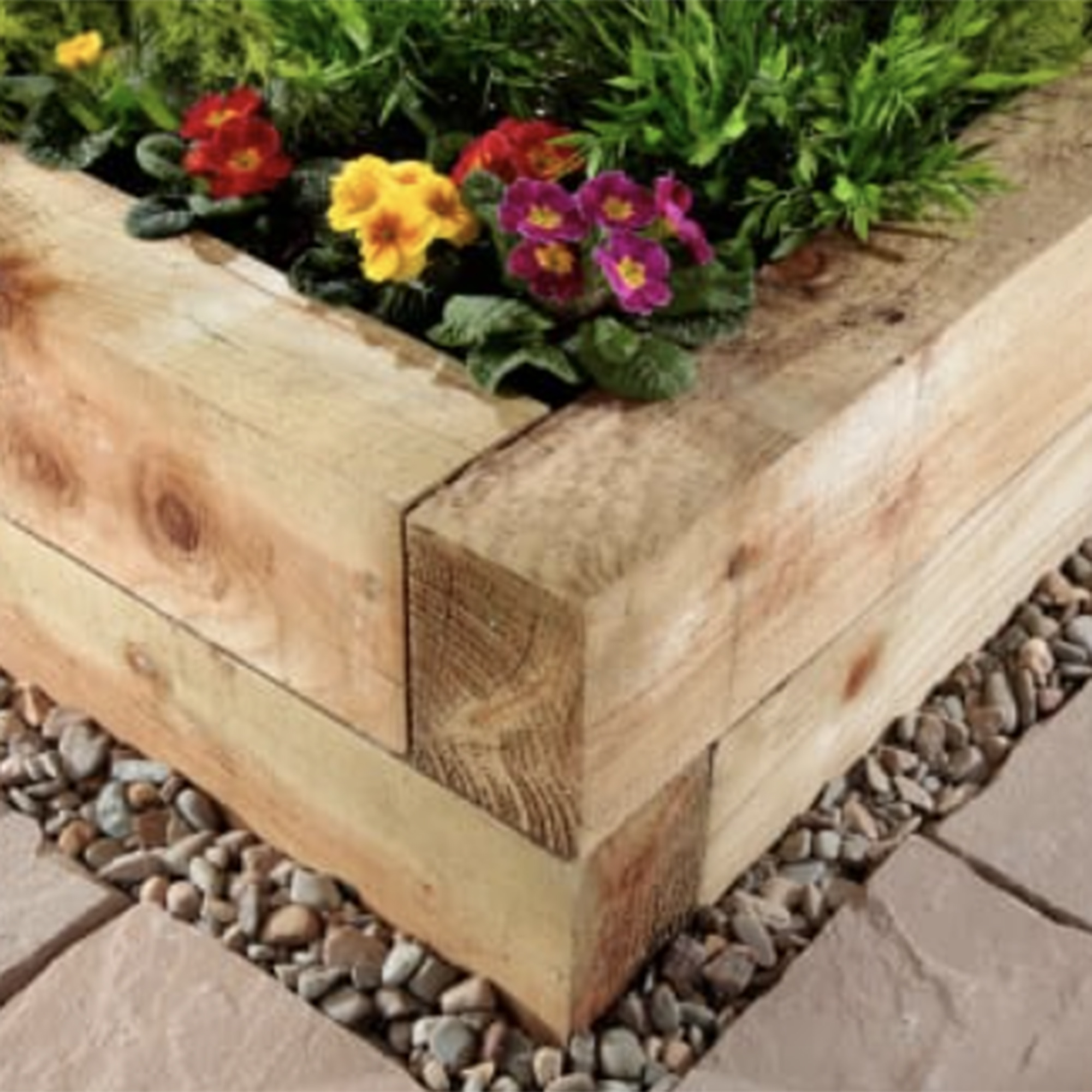
These sleepers have been pressure-treated, making them long lasting. Each piece weighs around 23kg so bear this in mind when ordering large quantities.

A landscaper and gardening expert with over 25 years of experience in the industry. Currently she works for MyJobQuote as their resident expert on all things gardening. She is highly knowledgeable and her expertise have featured in many reputable publications.
2. Use corrugated metal for industrial style
"Metal raised garden beds have become more popular over recent years and offer a more contemporary style for the modern garden. They are available in different colours and are very long-lasting," says Stephanie Harrod.
It's possible to create your own budget DIY raised garden bed using sheets of corrugated metal.
"Corrugated metal is also a great budget material for a raised bed. Reclaimed sheet metal can be bought from reclamation yards or online. You will need to attach it to some timber corner posts and supports but the metal is thin and is not too difficult to work with," says Fiona Jenkins.
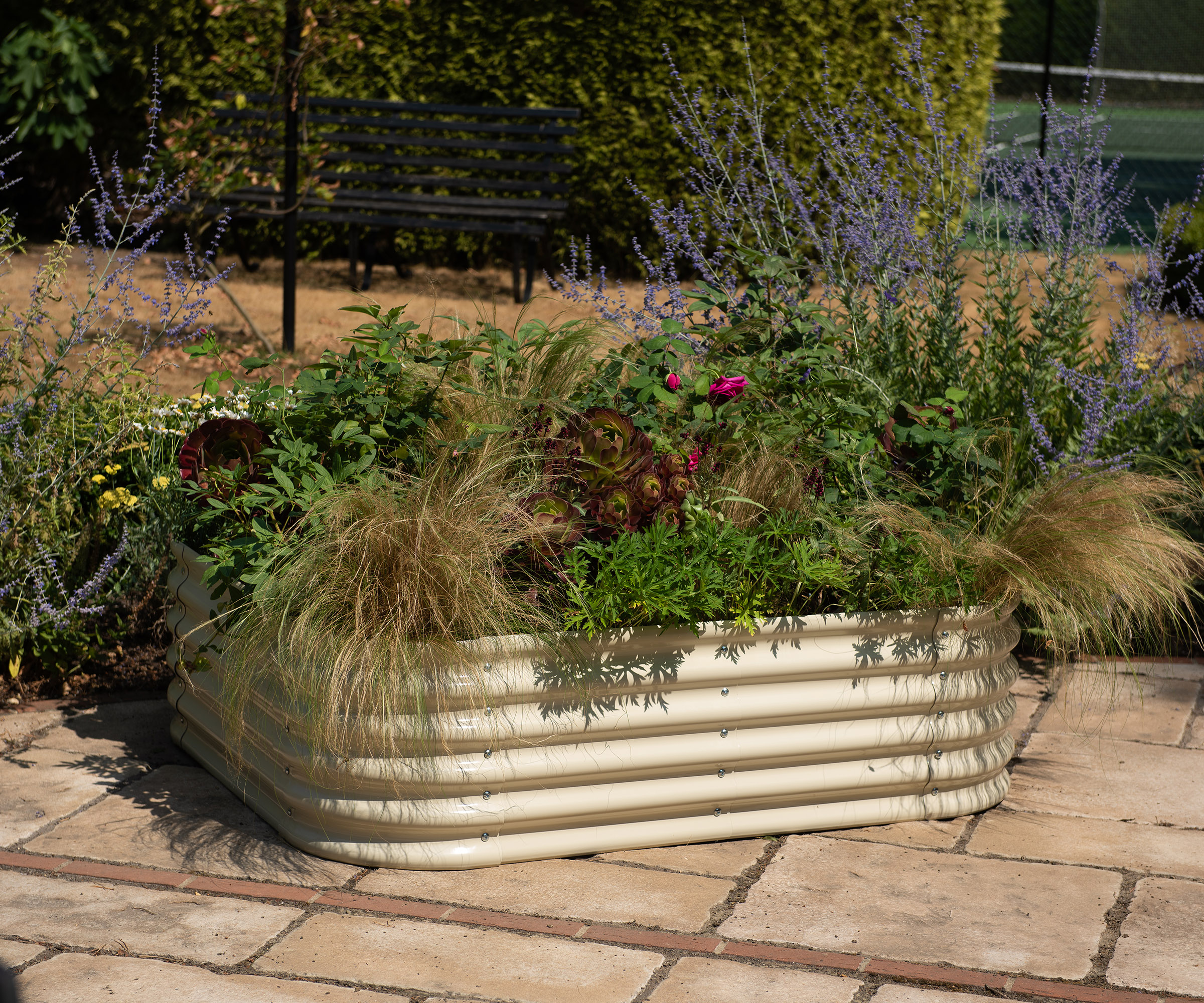
3. Railway sleepers are robust and easy to create
For a robust and easy-to-construct option choose to lay railway sleepers. You will need a chainsaw or circular saw to cut them to size and you should lay garden sleepers that are screwed in place.
"You can make the raised bed as high as you want by adding another row of sleepers, making sure to overlap the joints to make them stronger. Timber is one of the easiest materials for a DIY gardener to use, so sleepers are a great choice," says Fiona Jenkins.
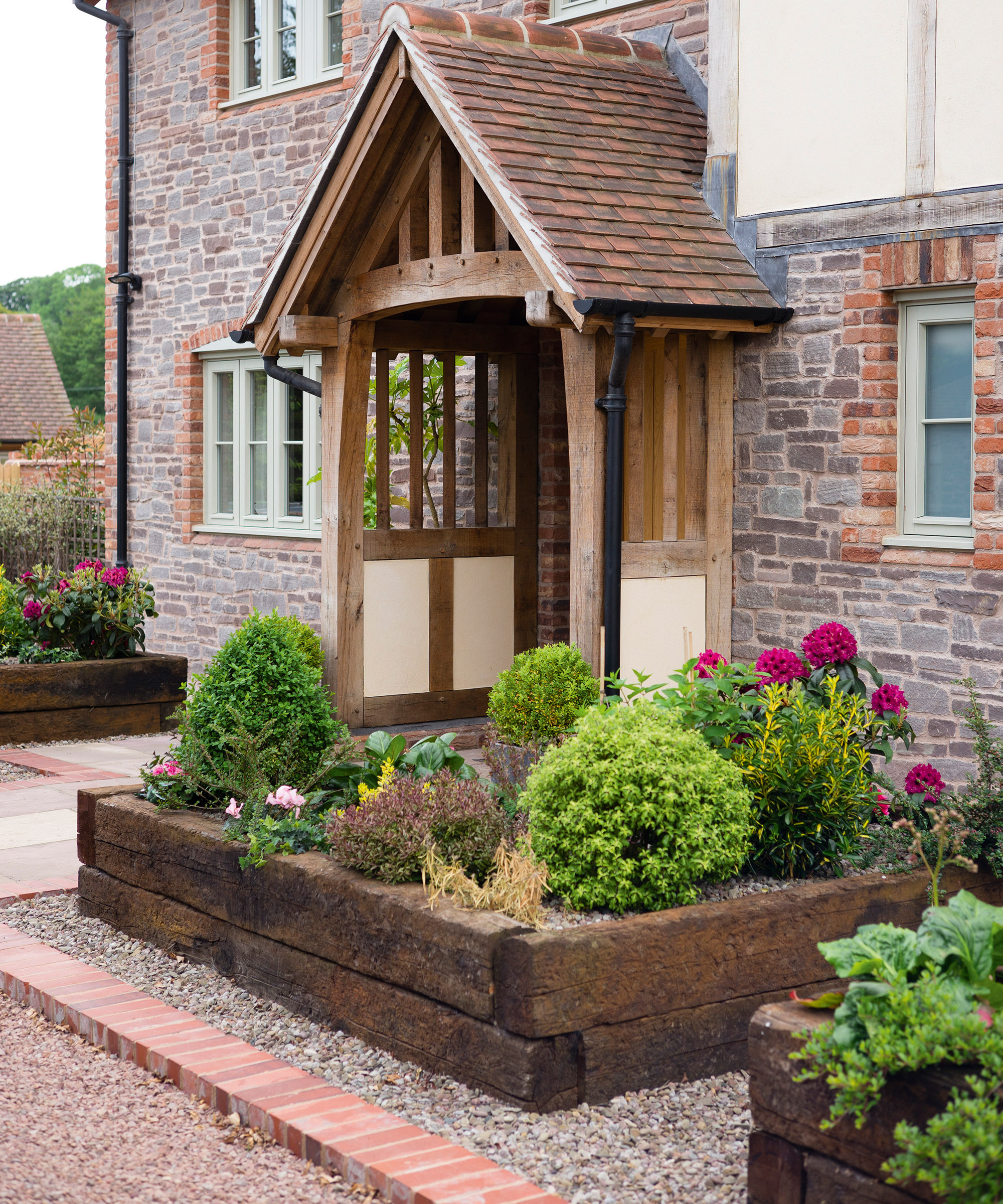
4. There are kits available for DIY novices
"If you don’t have access to timber sleepers or your DIY skills are not up to making the raised bed from scratch then you can buy a raised bed timber kit," says Fiona Jenkins.
"This will give you the raised bed you want without the hassle of gathering and preparing the materials yourself. The timber will be cut to the correct lengths and you will get all the correct fixings to put it together," Fiona
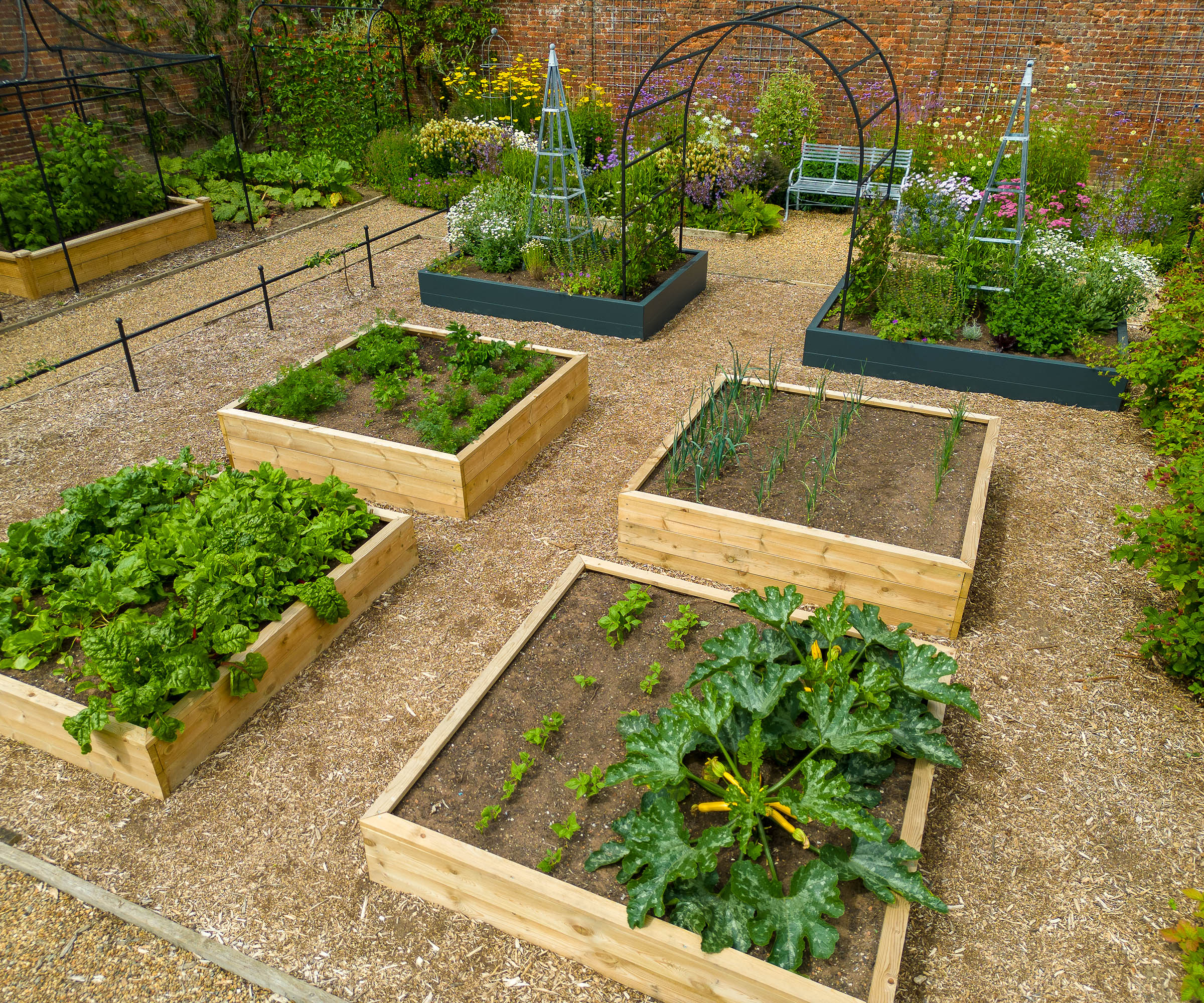
Shop ready-made raised bed options
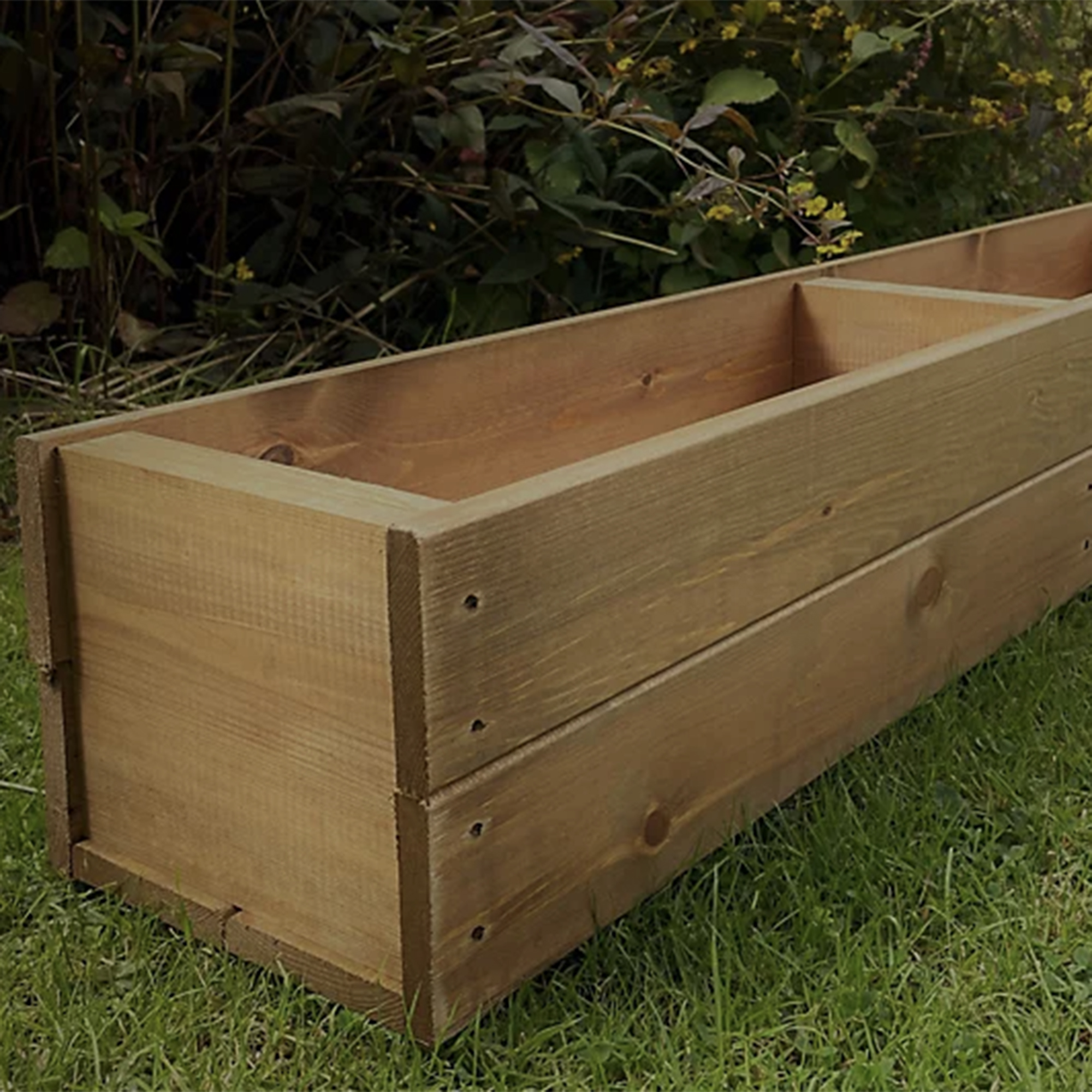
If your DIY skills are lacking then this trough will make a perfect raised bed. Buy multiple and line them up along a path, or create planting pockets in different areas.
5. They can be used to create zones in your garden
Raised beds are great for zoning and can help to create different garden areas according to Fiona Jenkins.
"You can use raised beds for privacy by using them as garden screening for corners of the garden for dining or a quiet reading area. Stone or brick-built raised beds can double up as seating areas with the addition of a wider top layer."
"Different raised beds can divide your garden into a fruit-growing section, a vegetable patch or a place where you grow your favourite flowers," says Fiona.

6. Plants can be displayed at different height levels
Raised garden bed ideas are particularly useful in small gardens, where you want to bring in lush planting to a small space. Even more so if you have high garden walls that look extremely bare.
If your garden is on a gradient, raised beds can be a way of landscaping a sloping garden to make it flow better.
"Having raised beds opens up more possibilities for your garden layout and gives you a wider choice for planting. You can introduce different levels to create more interest in a flat garden and add shape to a basic rectangular outdoor space," says Fiona.
You could try, for instance, having two-tiered corner raised beds. In the back section go for tall plants, such as dwarf tree varieties or climbers, whilst in the front bed plant mid to low-growing shrubs and/or seasonal bulbs.
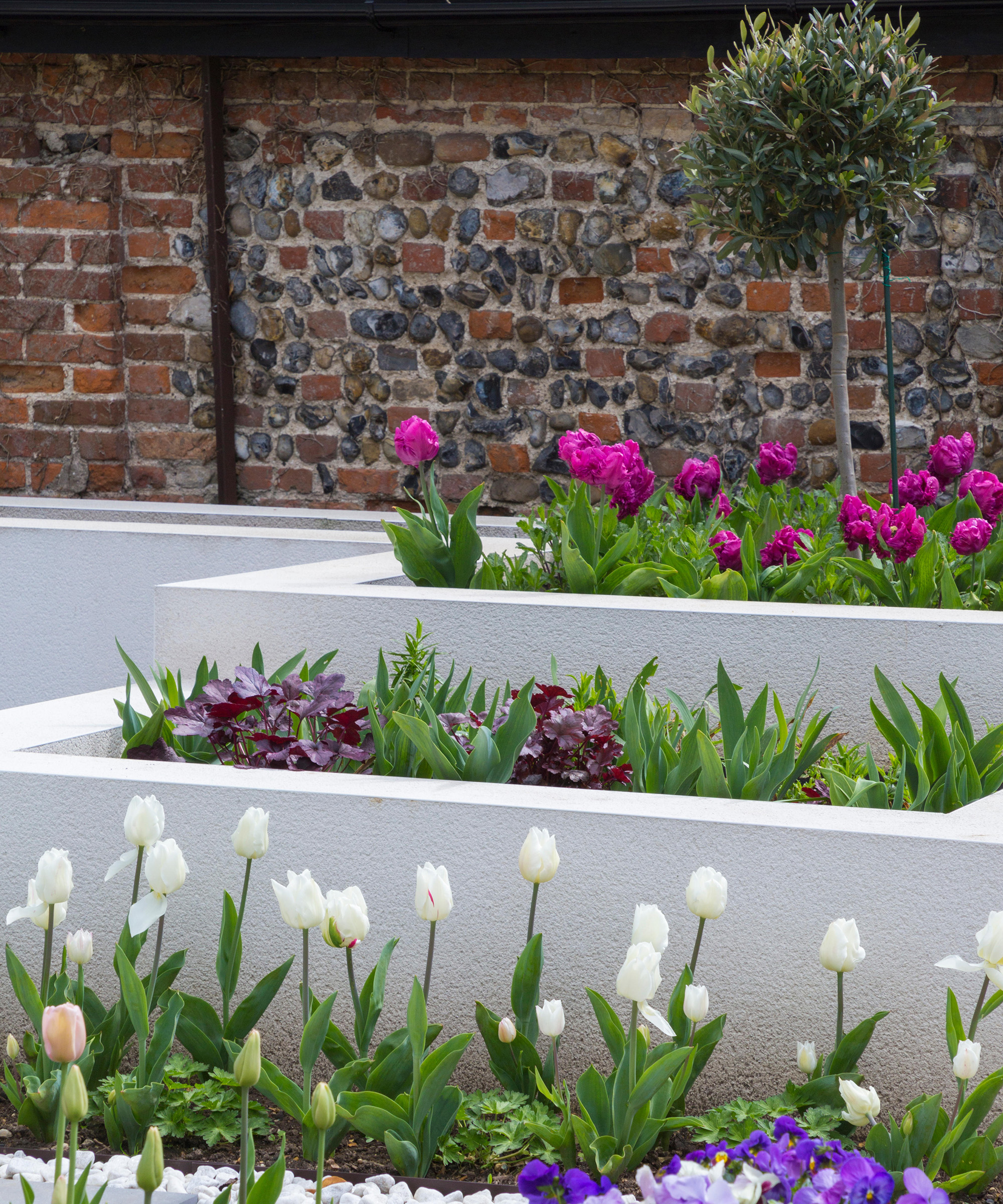
7. Add bricks to create flow with your house and garden
"Brick is an ideal material for creating raised flower beds as it offers strength and durability," says garden landscape expert Tom Clifford.
"Bricks can be shaped into different designs using curves, unlike wood, to add visual interest. It is important to use the correct type of brick to ensure the health of your plants, engineering bricks are a good choice as they are highly weather-resistant due to their low porosity," says Tom.
Brick raised-beds are a great budget garden idea if you're using up surplus bricks from an extension or renovation project. Using these materials in the garden can help to create a sense of cohesion with your indoor and outdoor spaces.
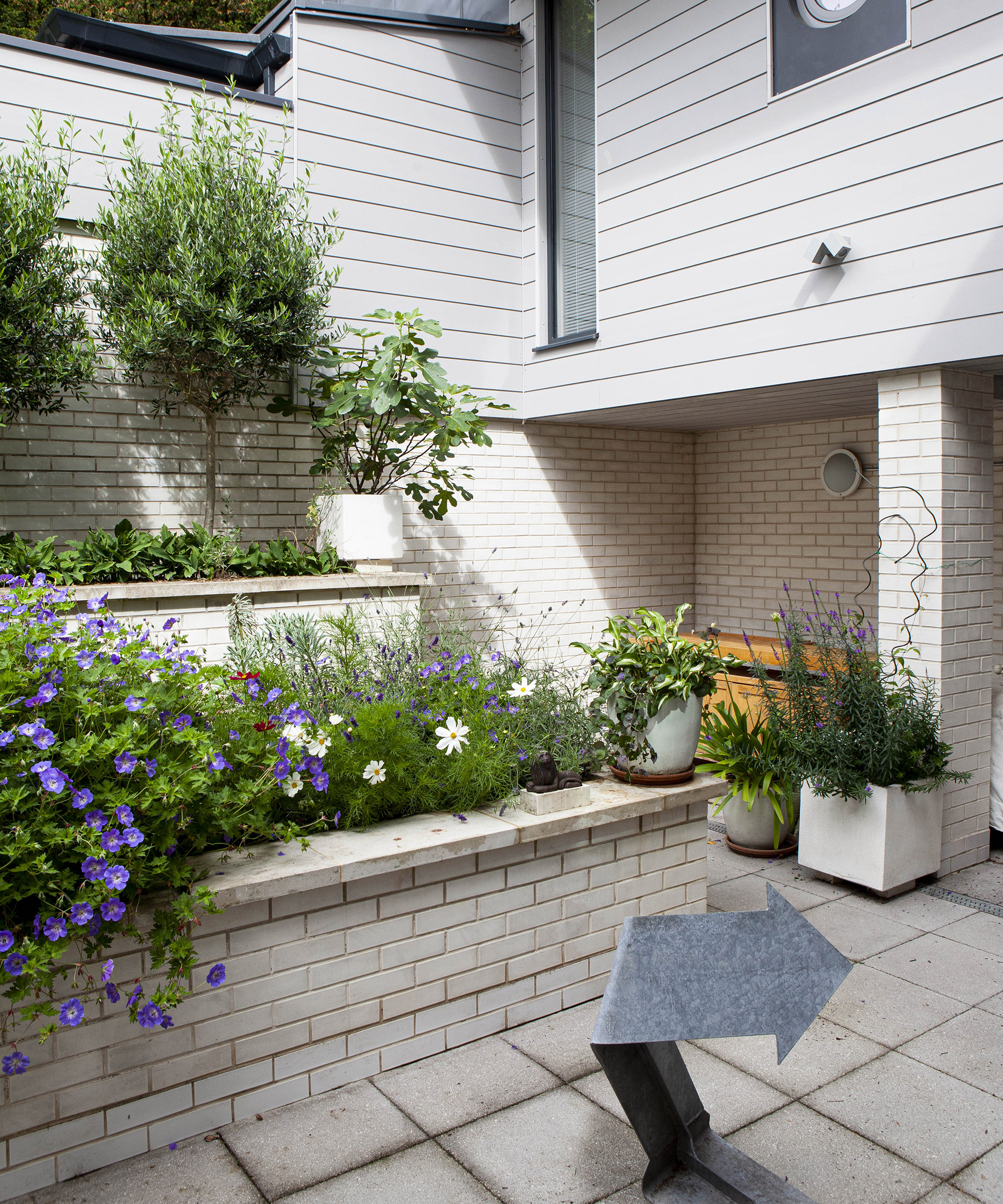

Tom has been in the garden landscaping business for over 13 years making him an expert in garden design. He is the director of Gardenstone Limited a garden landscaping materials company.
8. Simple raised bed ideas can be created on a budget
"When creating raised beds on a budget it's important to think outside the box. Galvanised tubs can be a visually interesting yet effective structure for a raised flower bed," says Tom Clifford.
"The galvanised steel has a zinc coating that prevents rusting and ensures the healthy growth of plants. These tubs also have good drainage which avoids water gathering in the bottom of the container preventing plant rot," says Tom.
9. Sleek and contemporary designs are available
The type of raised bed that looks best is a matter of personal choice. Some people will only use timber while others prefer to make stone or brick raised beds that are more permanent.
Timber may seem like the most popular choice for raised garden bed ideas, however that's not to say it's the only option, particularly if this more rustic look does not fit with your style.
"The aesthetic of your garden will go a long way towards steering you in the right direction when it comes to the look of the raised bed. More contemporary gardens can utilize metal in a raised bed without it looking out of place and it can even become a feature of the garden," says Fiona Jenkins.
Whilst metal is more expensive it will last longer and certain types, such as corten steel, will improve over time, developing unique patinas as they're exposed to the elements.
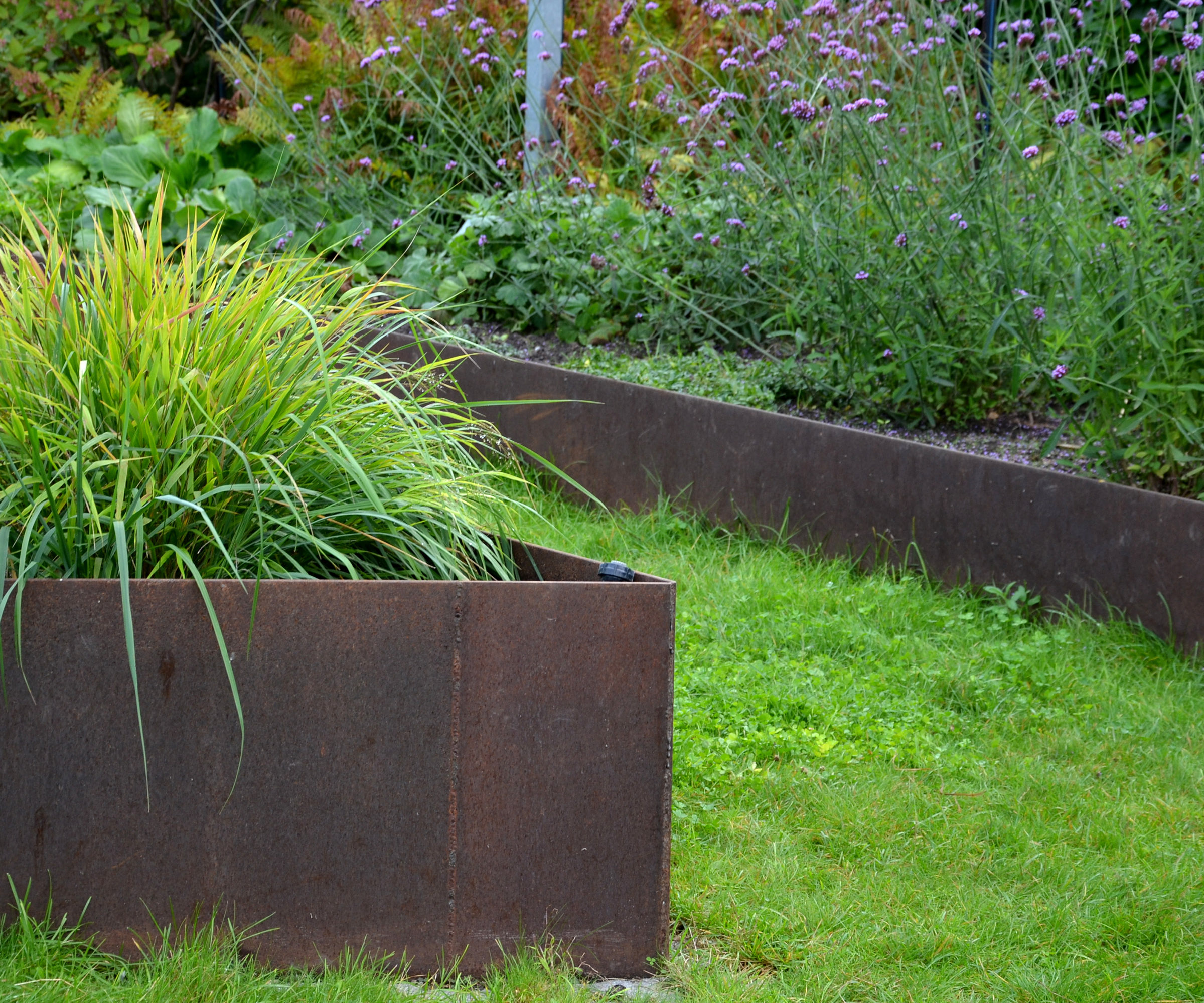
10. They can be incorporated into your decking
To give a seamless look to your raised beds, try using them in the same material as your raised decking or patio.
Use the opportunity when you're creating a deck to factor in raised beds as part of the design. Rather than adding them in later and trying to shoehorn them in. You can even create wide edges which will work as extra seating.
Raised beds are a neater way of displaying your patio planting than single containers.
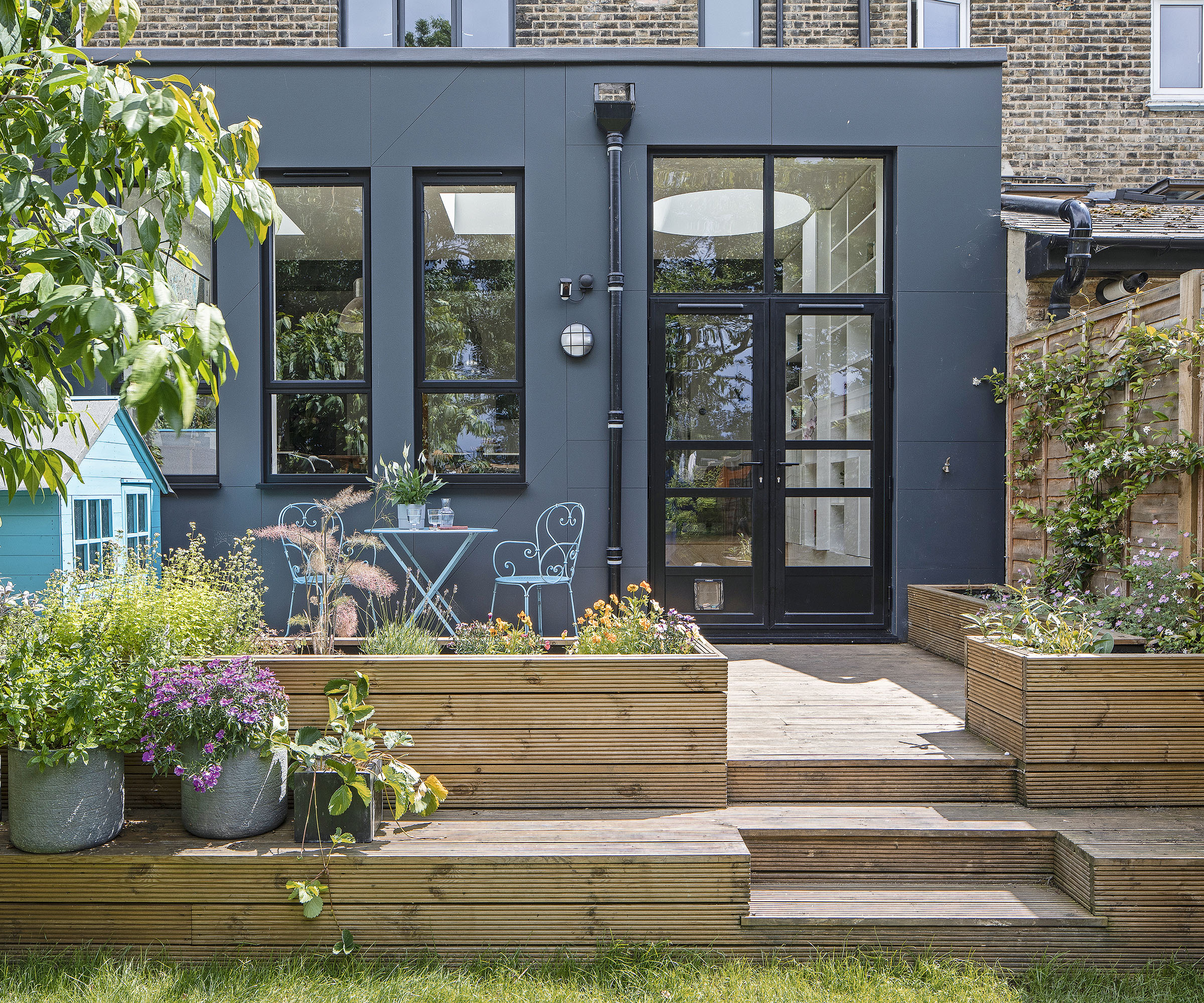
11. Seating areas can be surrounded by lush planting
As a way to add plants at head height, where they can be enjoyed whilst seated. Position some raised beds behind a seating area. Ideally in an area that isn't too shaded, in order for any plants you're growing to receive as much sunlight as possible.
Bear in mind that raised beds that are close to fences or other structures won't receive much rainfall. So any plants will need to be watered more frequently.
"It's a good idea to position your raised beds near a water source, this will be more convenient when it comes to watering," advises Tom Clifford.
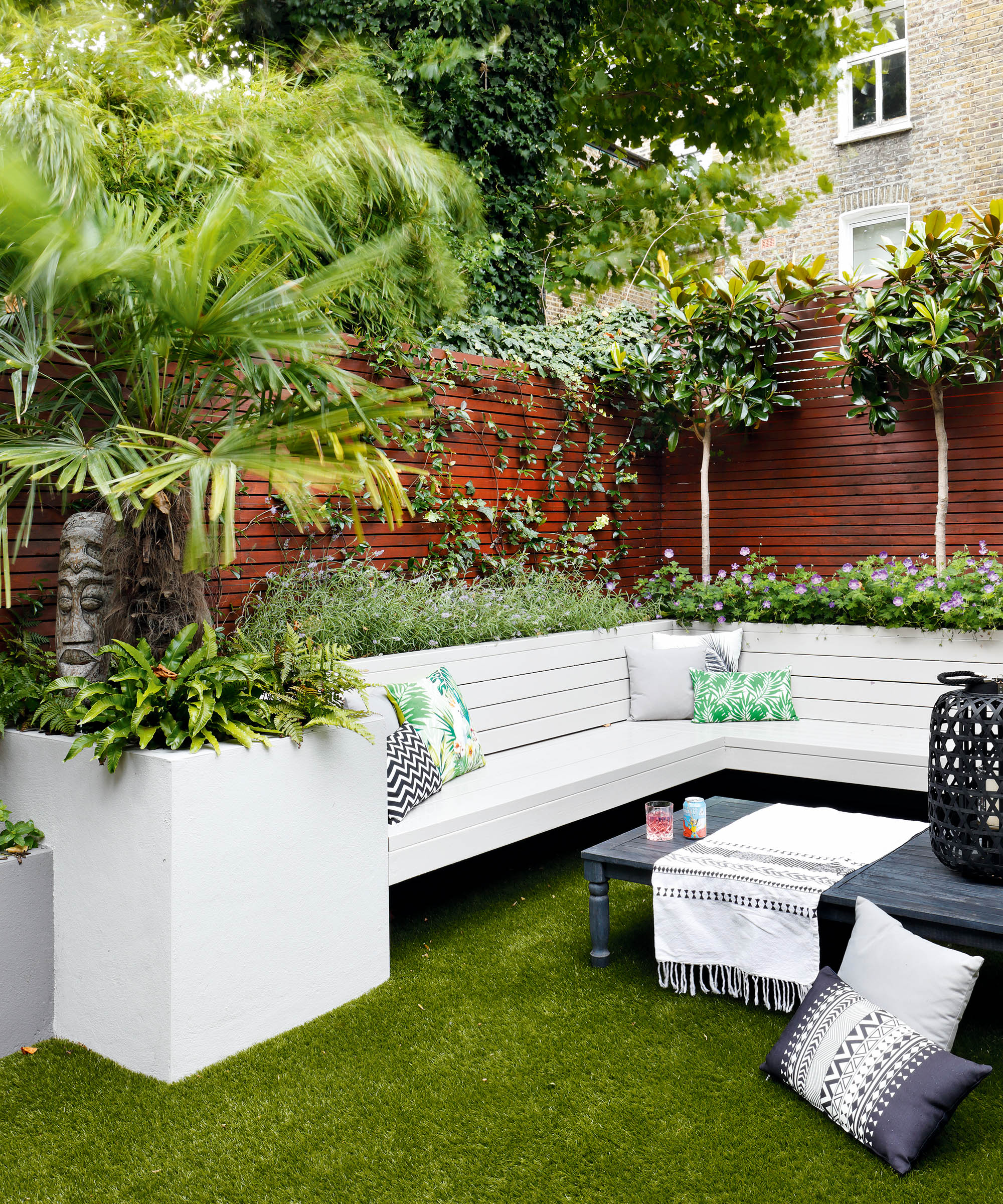
FAQs
What are the disadvantages of raised garden beds?
"Raised beds dry out faster than level flower beds, this means that they require more consistent watering. For busy or forgetful homeowners this could be a hindrance and may result in poor quality flower beds," says garden landscaping expert Tom Clifford.
"The initial construction of a raised bed may be significantly more time-consuming and costly than a regular flower bed"
What is the cheapest way to make a raised garden bed?
"Wood is an affordable yet durable material which makes it ideal for raised beds. In particular, recycled wood pallets are a sustainable and budget-friendly choice of wood that is a popular choice amongst homeowners for simple garden ideas," says garden landscape expert Tom Clifford.
"However, pallet wood may have a shorter lifespan than woods such as timber, to extend its lifespan ensure that you use a coat of wood preservative," he says.
Raised garden bed ideas aren't just for back gardens. They can spice up your kerb appeal too by making them part of your front garden ideas.
Get the Homebuilding & Renovating Newsletter
Bring your dream home to life with expert advice, how to guides and design inspiration. Sign up for our newsletter and get two free tickets to a Homebuilding & Renovating Show near you.

Teresa was part of a team that launched Easy Gardens in 2018 and worked as the Editor on this magazine. She has extensive experience writing and editing content on gardens and landscaping on brands such as Homes & Gardens, Country Homes & Interiors and Living Etc magazine. She has developed close working relationships with top landscape architects and leading industry experts, and has been exposed to an array of rich content and expertise.
In 2020 Teresa bought her first home. She and her partner worked alongside architects and builders to transform the downstairs area of her two bedroom Victorian house in north London into a usable space for her family. Along the way she learned the stresses, woes and joys of home renovation, and is now looking to her next project, landscaping the back garden.
